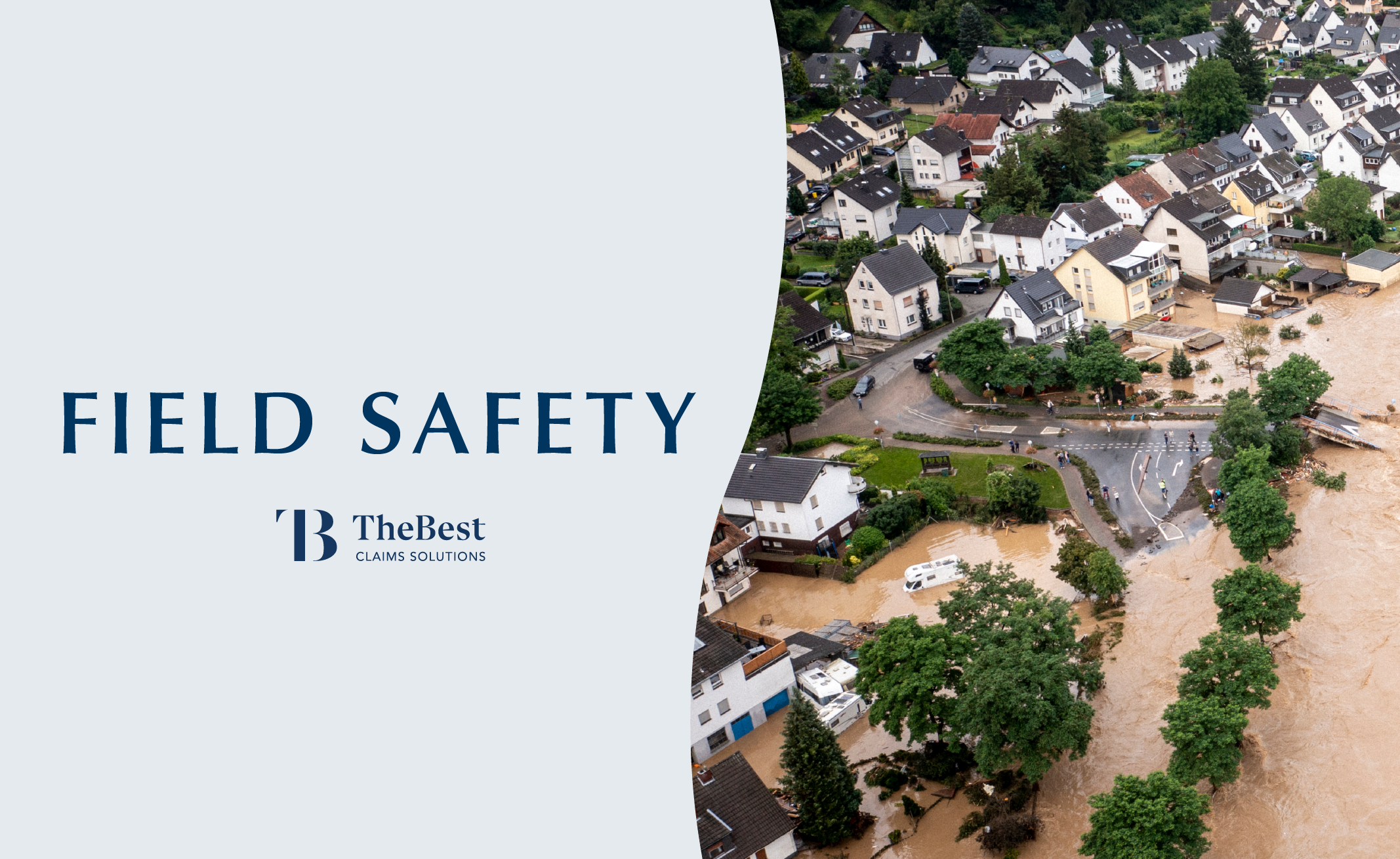As field adjusters, hazardous environments are just another part of the job. Before setting foot out in the field, remember: safety is your compass. When Mother Nature throws you a curveball in the form of unpredictable terrain, it’s important to approach with caution and patience. Staying grounded – both literally and figuratively – ensures you keep your footing even when the ground beneath you seems unsure.
Be aware of your surroundings
Picture this: you’ve recently been deployed to an area that’s been hit hard by a natural disaster, but also somewhere you’ve never been before. As you navigate this new location, approach with caution and take time to familiarize yourself with your surroundings. Check the ground for hazards like debris, mud, and ice and avoid wading through deep water when possible.
Protect yourself from the elements
In the realm of field adjusting, some threats are inevitable. Instead of trying to thwart nature’s elements, focus on protecting yourself against them. While you can’t stop the sun from shining, you can wear SPF and protective clothing as a barrier against the sun’s harmful rays.
Equipped with the right Personal Protective Equipment (PPE), you’re not just preventing injuries – you’re gearing up for victory. So, lace up your boots, secure those gloves, and gear up like a pro.
Make sure you have everything you need for your next deployment by checking out what our pros are packing in their tool kits here.
Scale to Great Heights with Certainty
Climbing ladders will always be part of an adjuster’s job, so learning how to climb them correctly and safely is vital to your success. Before you take that first step, ascend with confidence by inspecting every rung and support, maintain 3 points of contact with the ladder at all times, and avoid electrical hazards by not using a metal ladder near power lines or exposed energized electrical equipment.
To learn more about climbing ladders safely, check out our post here.



